Hi GPODers!
The official first day of spring is only a couple of days away, but depending on where you live you might still be dealing with snow or already seeing spring growth all around you. For Daniel Rivera in Union City, California spring is already in full force. Daniel shared a short video of all of the fabulous new growth already emerging from established plants and and brand new seedlings. I took some screenshots to discuss some of my favorite plants and scenes he shared.
Spring has sprung; grafts are now growing and on display for the next stage of life in the garden 🪴
Look 👀 for my special seedlings 🌱 on display. The rare Wollemi pine (Wollemia nobilis, Zones 9–11): Manually collected pollen from mother tree and harvested mature seeds, then scattered planted the seeds in the garden.
It’s like seeing into the future! Spring hasn’t sprung like this just yet in Connecticut, but I know these scenes will be making their way to my area very soon.
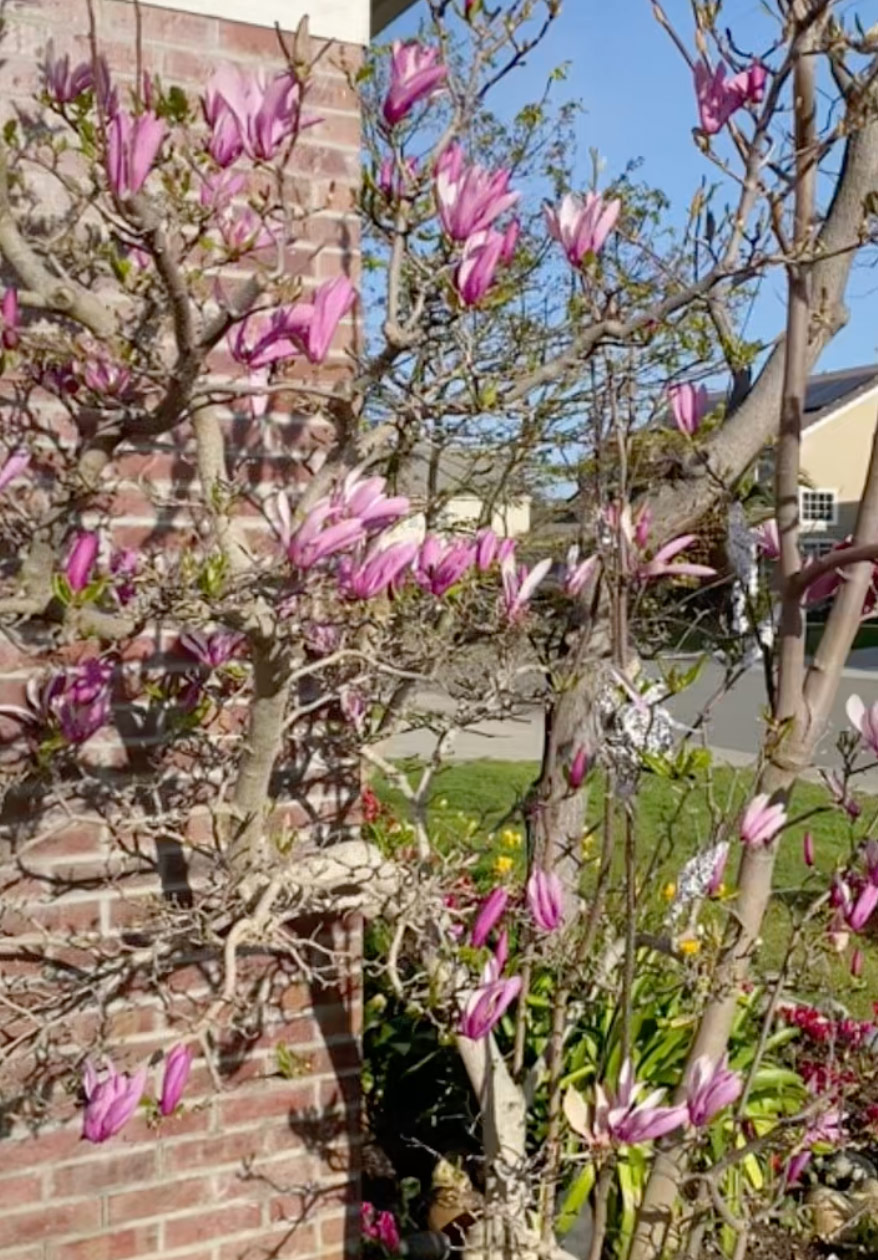 Daffodils, tulips, and other spring bulbs are a sure-fire sign that spring has arrived, but flowering trees are some of my favorite earliest bloomers. First, Daniel shows off this amazing lily magnolia (Sorbaria sorbifolia ‘Levgreen’, Zones 3–7) with a multitude of goblet-shaped flowers and the very first pops of new foliage. Daniel also has several grafts on this magnolia, which encourages these abundant blooms. Magnolias, when grown from seed, can take up to 10 to 15 years to produce its first flower, so the majority of magnolias sold today are grafted plants. Whether Daniel grew this plant from seed (which is a strong possibility considering his other seedlings), or just wants even more blooms and growth, grafting can be a huge boon for your trees.
Daffodils, tulips, and other spring bulbs are a sure-fire sign that spring has arrived, but flowering trees are some of my favorite earliest bloomers. First, Daniel shows off this amazing lily magnolia (Sorbaria sorbifolia ‘Levgreen’, Zones 3–7) with a multitude of goblet-shaped flowers and the very first pops of new foliage. Daniel also has several grafts on this magnolia, which encourages these abundant blooms. Magnolias, when grown from seed, can take up to 10 to 15 years to produce its first flower, so the majority of magnolias sold today are grafted plants. Whether Daniel grew this plant from seed (which is a strong possibility considering his other seedlings), or just wants even more blooms and growth, grafting can be a huge boon for your trees.
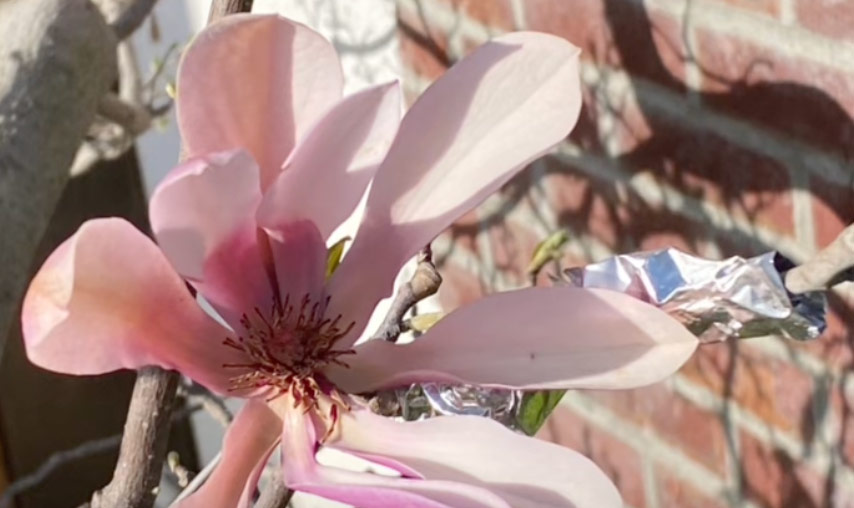 A close up of one of those wonderful blooms is a testament to the success Daniel has had with his magnolia cultivating.
A close up of one of those wonderful blooms is a testament to the success Daniel has had with his magnolia cultivating.
 Another favorite, early-spring flowering woody is the redbud. No matter the variety, I always adore the way flowers emerge, looking like the bright purple blooms are slowly consuming the bare branches and transforming the tree into something completely new.
Another favorite, early-spring flowering woody is the redbud. No matter the variety, I always adore the way flowers emerge, looking like the bright purple blooms are slowly consuming the bare branches and transforming the tree into something completely new.
 But it’s not just trees that are sporting spring growth and color in Daniel’s beds. Fresh, bright green leaves are emerging from every corner, and cyclamen (Cyclamen persicum, Zones 9–11) are continuing their winter floral display into the sunny days of spring.
But it’s not just trees that are sporting spring growth and color in Daniel’s beds. Fresh, bright green leaves are emerging from every corner, and cyclamen (Cyclamen persicum, Zones 9–11) are continuing their winter floral display into the sunny days of spring.
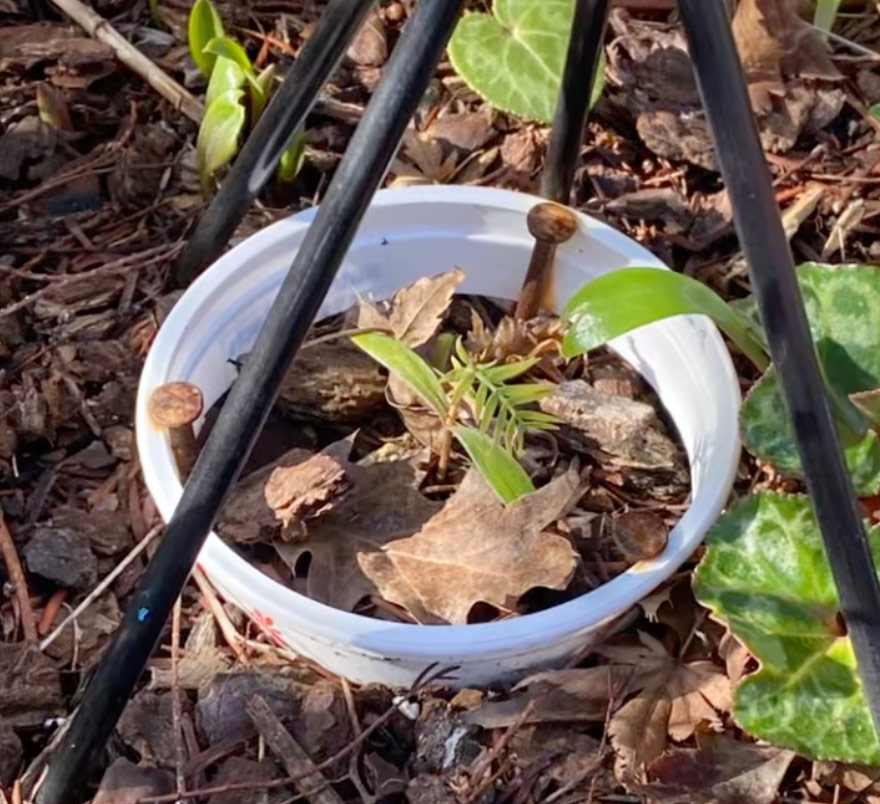 Lastly, the infamous Wollemi pine seedlings that Daniel highlighted above. Native to Australia, this unique conifer is one of the rarest and oldest trees in the world. With very few specimens left in the wild (it was said to be extinct until a chance discovery in 1994), growing these trees can be compared to growing a “living fossil.” To learn more about these fascinating conifers, check out this incredible article from the New South Wales National Parks and Wildlife Service: Wollemi Pine. And understandably, Daniel is taking every precaution with this precious seedling.
Lastly, the infamous Wollemi pine seedlings that Daniel highlighted above. Native to Australia, this unique conifer is one of the rarest and oldest trees in the world. With very few specimens left in the wild (it was said to be extinct until a chance discovery in 1994), growing these trees can be compared to growing a “living fossil.” To learn more about these fascinating conifers, check out this incredible article from the New South Wales National Parks and Wildlife Service: Wollemi Pine. And understandably, Daniel is taking every precaution with this precious seedling.
Thank you so much for sharing this beautiful taste of spring with us, Daniel! Your spring garden is a treasure trove and interest and fascinating plants. For those of us still thawing out, this glimpse of color and blooms is encouragement that spring is on our heals.
The first signs of spring are always exhilarating, but it’s easy for the earliest blooms and first unfurling leaves to come and pass before we have a chance to slow down, sit, and really enjoy our gardens. Before our gardens become flush with growth and full of color, try to get outside to capture those earliest signs that spring is in the air. Snap some photos, take a video or two, and considering sharing the buzz of this thrilling time with Garden Photo of the Day! Follow the directions below to submit your photos via email, or send me a DM on Instagram: @agirlherdogandtheroad.
Have a garden you’d like to share?
Have photos to share? We’d love to see your garden, a particular collection of plants you love, or a wonderful garden you had the chance to visit!
To submit, send 5-10 photos to [email protected] along with some information about the plants in the pictures and where you took the photos. We’d love to hear where you are located, how long you’ve been gardening, successes you are proud of, failures you learned from, hopes for the future, favorite plants, or funny stories from your garden.
Have a mobile phone? Tag your photos on Facebook, Instagram or Twitter with #FineGardening!
Do you receive the GPOD by email yet? Sign up here.
Fine Gardening Recommended Products
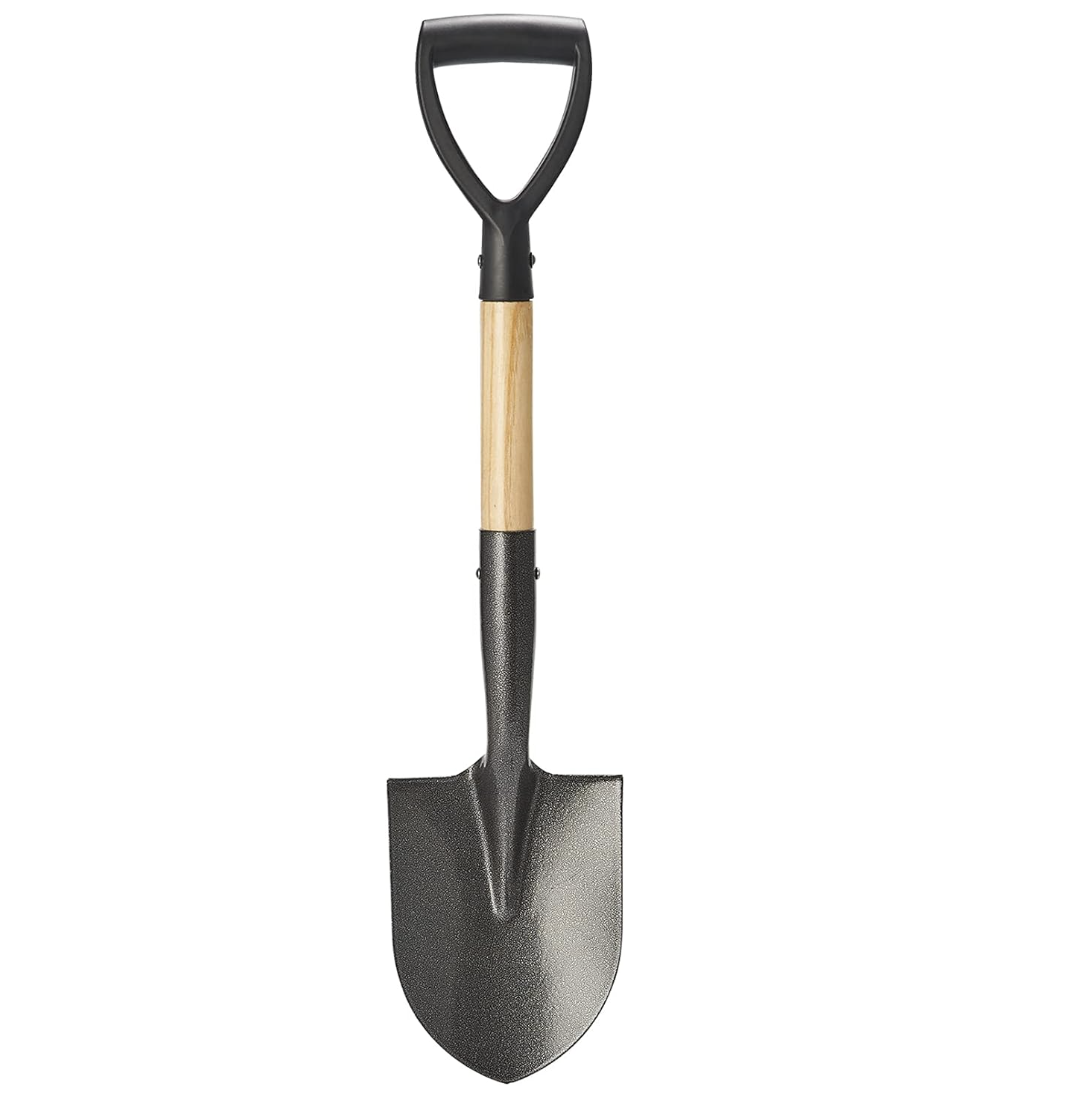
Corona® Multi-Purpose Metal Mini Garden Shovel
Fine Gardening receives a commission for items purchased through links on this site, including Amazon Associates and other affiliate advertising programs.
Longer Service Life: The blade of this round small shovel is made of carbon steel, which can effectively improve the hardness by high temperature quenching, and the surface has anti-rust coating to avoid rusting. In the process of use when encountering hard objects will not bend and deformation.
Sturdy Structure: The small garden shovel with D-handle, ergonomically designed grip can increase the grip of the hand when using, the handle is made of strong fiberglass, will not bend and break under heavy pressure. Quick Digging: Well-made digging shovel has a sharp blade, and the round shovel head is designed to easily penetrate the soil and cut quickly while digging to enhance your work efficiency.

The Crevice Garden: How to make the perfect home for plants from rocky places
Fine Gardening receives a commission for items purchased through links on this site, including Amazon Associates and other affiliate advertising programs.
A crevice garden replicates the environmental conditions of mountain tops, deserts, coastlines, and other exposed or rocky places on earth. These striking garden features provide perfect conditions for the plants native to these far-off places, bringing the cultivation of these precious gems within everybody’s reach.
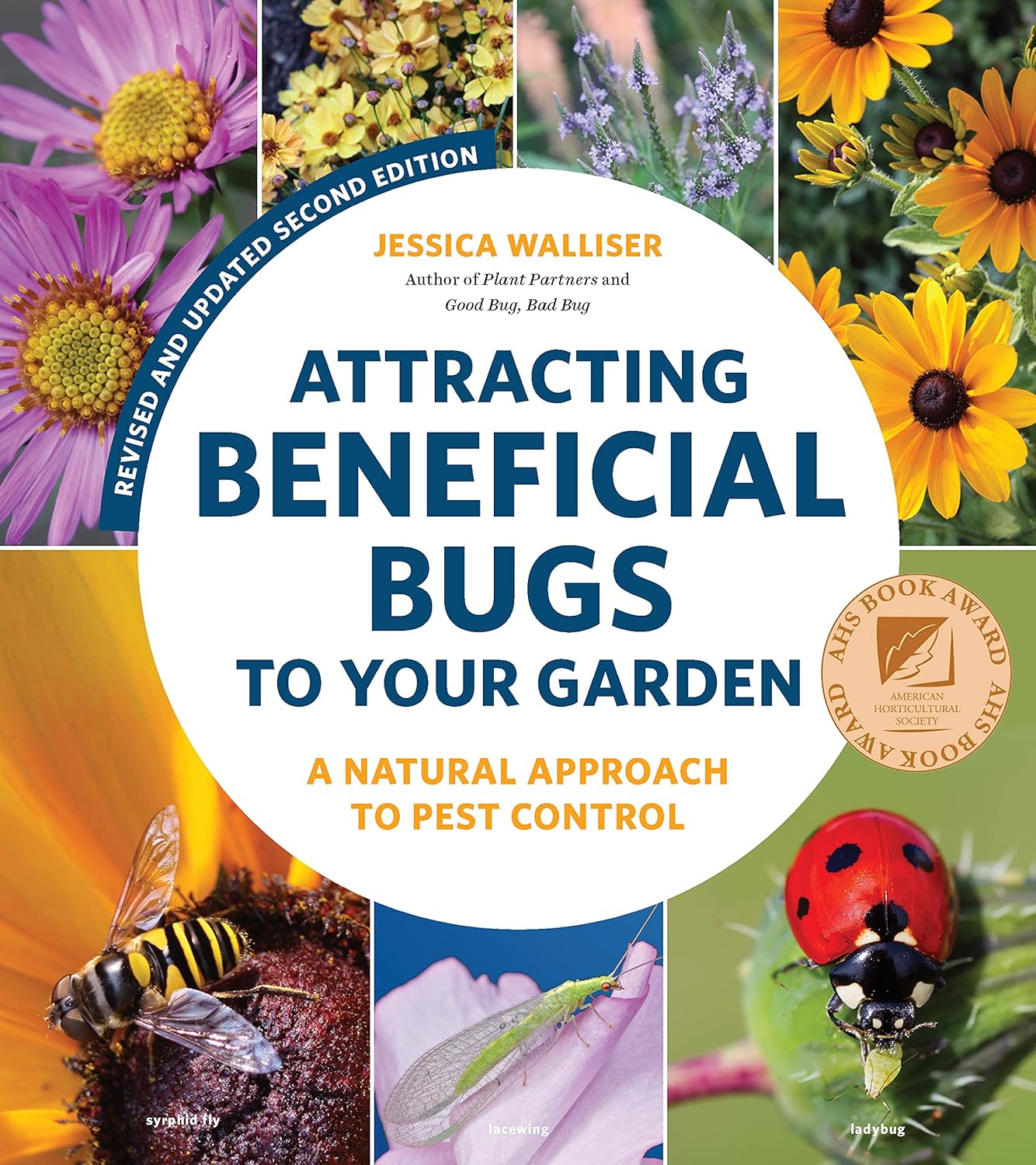
Attracting Beneficial Bugs to Your Garden, Revised and Updated Second Edition: A Natural Approach to Pest Control
Fine Gardening receives a commission for items purchased through links on this site, including Amazon Associates and other affiliate advertising programs.
This revised and updated edition of Jessica Walliser’s award-winning Attracting Beneficial Bugs to Your Garden offers a valuable and science-backed plan for bringing balance back to the garden. With this indispensable gardening reference—now updated with new research, insights, and voices—learn how to create a healthy, balanced, and diverse garden capable of supporting a hard-working crew of beneficial pest-eating insects and eliminate the need for synthetic chemical pesticides.




